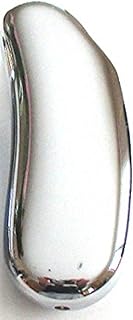The Economics of BIC Lighters: Why Are They So Cheap?
BIC lighters are a ubiquitous presence, known for their affordability and reliability. But how does BIC manage to produce such a seemingly simple product at such a low price?
Here's a breakdown of the key factors:
1. Economies of Scale:
* Mass Production: BIC produces millions of lighters daily, achieving immense economies of scale. This means the cost per lighter decreases as the production volume increases.
* Standardized Design: BIC's lighters have a simple, standardized design, minimizing the need for complex manufacturing processes and specialized tools. This further reduces production costs.
* Efficient Supply Chain: BIC has a well-established global supply chain for sourcing raw materials and components. This ensures consistent and cost-effective procurement.
2. Material Costs:
* Lightweight Materials: BIC utilizes lightweight materials like plastic and metal for their lighters. This reduces shipping costs and keeps the overall weight and cost down.
* Simple Design: BIC's lighters are designed with minimal components, further reducing material costs.
* Recycled Materials: BIC employs recycled materials in some of their products, further reducing costs.
3. Manufacturing Efficiency:
* Automated Processes: BIC's production lines are highly automated, relying on robots and other machinery to perform repetitive tasks. This minimizes labor costs and increases output.
* Lean Manufacturing: BIC implements lean manufacturing principles to minimize waste and maximize efficiency. This streamlines their production process and reduces overall costs.
4. Business Model:
* High Volume, Low Margin: BIC's business model revolves around selling a high volume of lighters at a low margin. This strategy allows them to penetrate the market aggressively and capture a large customer base.
* Global Distribution: BIC has a wide distribution network, selling its lighters in over 160 countries. This allows them to access new markets and minimize distribution costs.
5. Pricing Strategy:
* Competitive Pricing: BIC prices its lighters competitively to remain attractive to consumers and maintain a strong market share.
* Value-Oriented Positioning: BIC positions its lighters as a value-for-money option, emphasizing their affordability and reliability.
6. Brand Recognition:
* Strong Brand Equity: BIC has established a strong brand name synonymous with reliability and affordability. This brand recognition further strengthens their competitive position and allows them to maintain lower prices.
In Conclusion:
BIC's success in producing affordable lighters hinges on a combination of factors: economies of scale, cost-effective materials, efficient manufacturing processes, a strategic business model, competitive pricing, and a strong brand image. By optimizing these aspects, BIC has managed to create a highly successful and sustainable business model.


